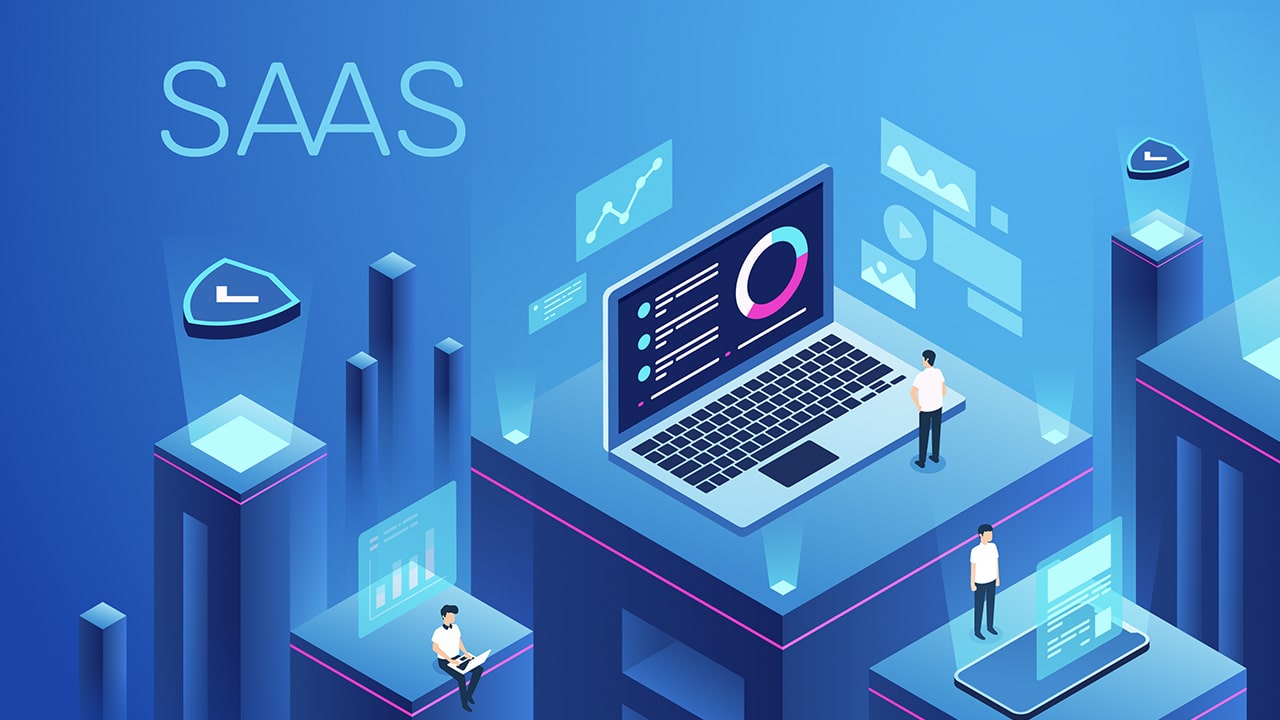What is SaaS – Software as a Service
No matter which business you choose, migrating to cloud services is the future of business needs.
Software as a Service (SaaS) is a software-delivering model in which a cloud provider hosts applications and makes them available to end users via the Internet.
Without installing and maintaining software, one can simply access it through the Internet, freeing himself from complicated software and hardware management.

SaaS Business Model Canvas
For example, email, calendar, and office tools (like- Microsoft Office).
SaaS applications are also called web-based software/on-demand software/hosted software. However, SaaS applications run on the servers of the SaaS provider.
The provider manages all functionality of the application, including accessibility, performance, security, and availability.
Software as a Service (or SaaS) is a way of distributing applications over the Internet - as a service. By this model, an independent software vendor (ISV) can contract with a third-party cloud provider to host the application. With big Companies like Microsoft, the cloud provider can also be a software vendor.
Cloud computing has three main categories:
- Software as a Service (SaaS)
- Infrastructure as a Service (IaaS)
- Platform as a Service (PaaS).
Many of us; IT professionals, business owners, and individuals use SaaS applications. SaaS products are often marketed to both B2B and B2C users, and products range from personal entertainment to advanced IT tools like Netflix.
Technology industry analysts predict further growth in the SaaS market, and the market for SaaS products is expected to see close to $200 billion by 2024, according to McKinsey & Company's recent report.
Common SaaS Scenarios
SaaS provides a complete software solution that you buy on a paid basis from a cloud service provider.
You rent access to an app for your organization, and your users can access it over the Internet, usually with a web browser.
All middleware, underlying infrastructure, app software, and app data are stored in the service provider's data center.
The Service Provider manages the hardware and the software and, with an appropriate service agreement, it also ensures the availability and security of the App and your data.
SaaS allows your organization to run fast with a single app at a minimal upfront cost.
How does Software as a Service work?
SaaS works over a cloud delivery model and is basically accessed through a web browser.
A software provider will either host the application and associated data using its server, database, networking, and computing resources. Or it could be an ISV that contracts with a cloud provider to host the application in the provider's data center and the application will be accessible to any device with an internet connection.
As a result, companies using SaaS applications, skip the task of the setup and maintenance of the software. Users pay only a subscription fee to get access to the software, which is a ready-made solution.
SaaS is closely related to the ASP (application service provider) and on-demand computing software delivery model, where the provider hosts the customer's software and distributes it to approved end users.
In the SaaS model, the provider offers customers network-based access to a copy of the application that the provider has built specifically for SaaS distribution.
The source code of the application is the same for all customers, and when new features or functionalities are released, they are rolled out to all customers. Depending on the service-level agreement (SLA), customer data for each model can be stored locally, in the cloud, or both locally and in the cloud.
Organizations can integrate SaaS applications with other software by using APIs (Application Programming Interfaces).
For example, a business can write its software tools and use a SaaS provider's API to integrate those tools with the SaaS offering.
SaaS architecture
SaaS applications use a multi-tenant approach, which means that one instance of the SaaS application will be running on the host server, and that single instance will be subscribing to each customer or cloud tenant.
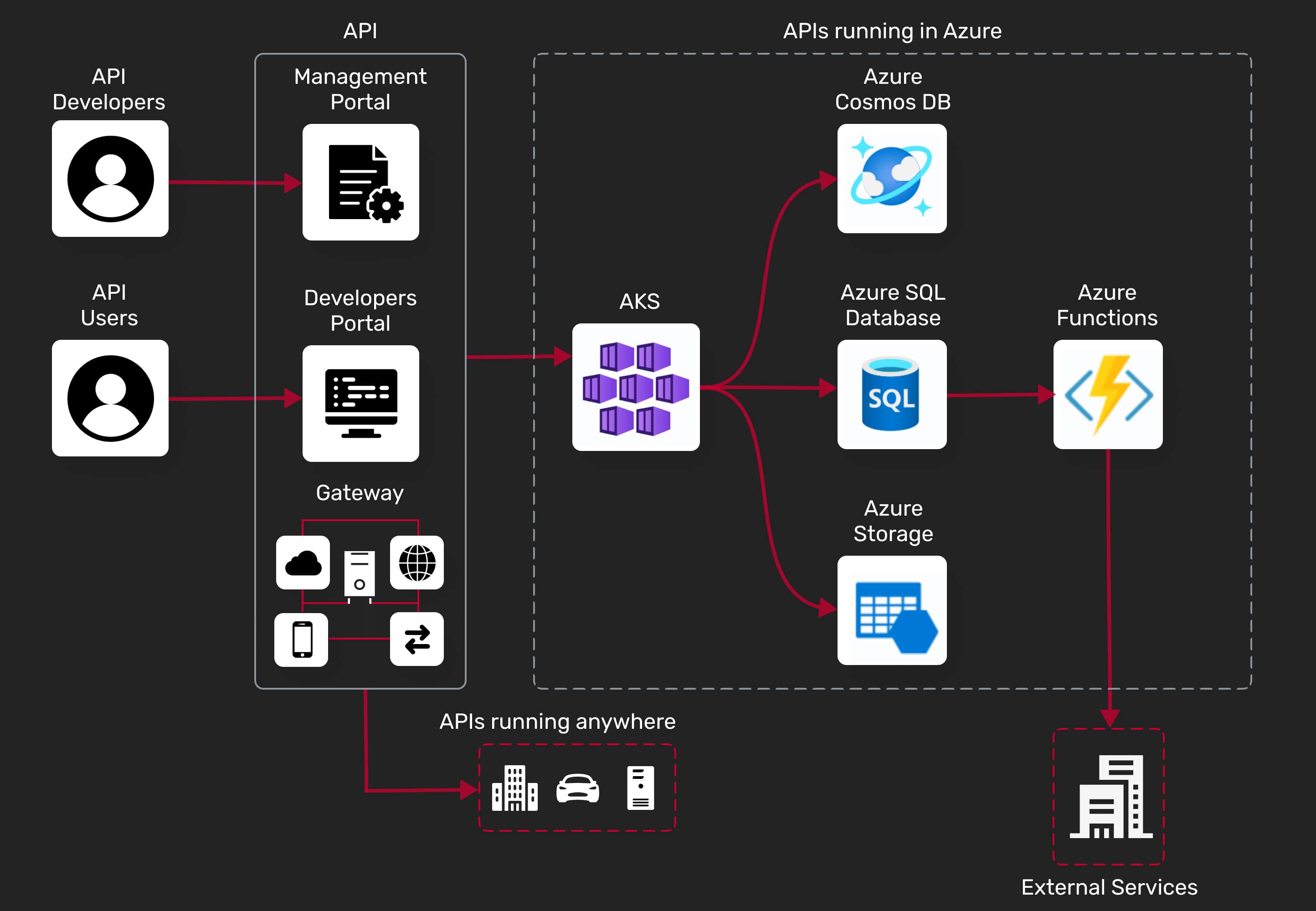
The application will run on a single version and configuration for all customers or tenants. Although different customers will run on the same cloud instance with the same infrastructure and platform, the data from different customers will be kept separate.
The distinctive multi-tenant architecture of SaaS applications means that the cloud service provider can manage maintenance, updates, and bug fixes faster, easier, and more efficiently.
Instead of applying changes to multiple instances, engineers can make necessary changes, while maintaining a single, shared instance for all customers.
Additionally, multi-tenancy allows many resources to be available to a larger group of people, without compromising crucial cloud functions such as speed, security, and privacy.
Advantages of SaaS
SaaS offers a bundle of benefits along with its versatility.
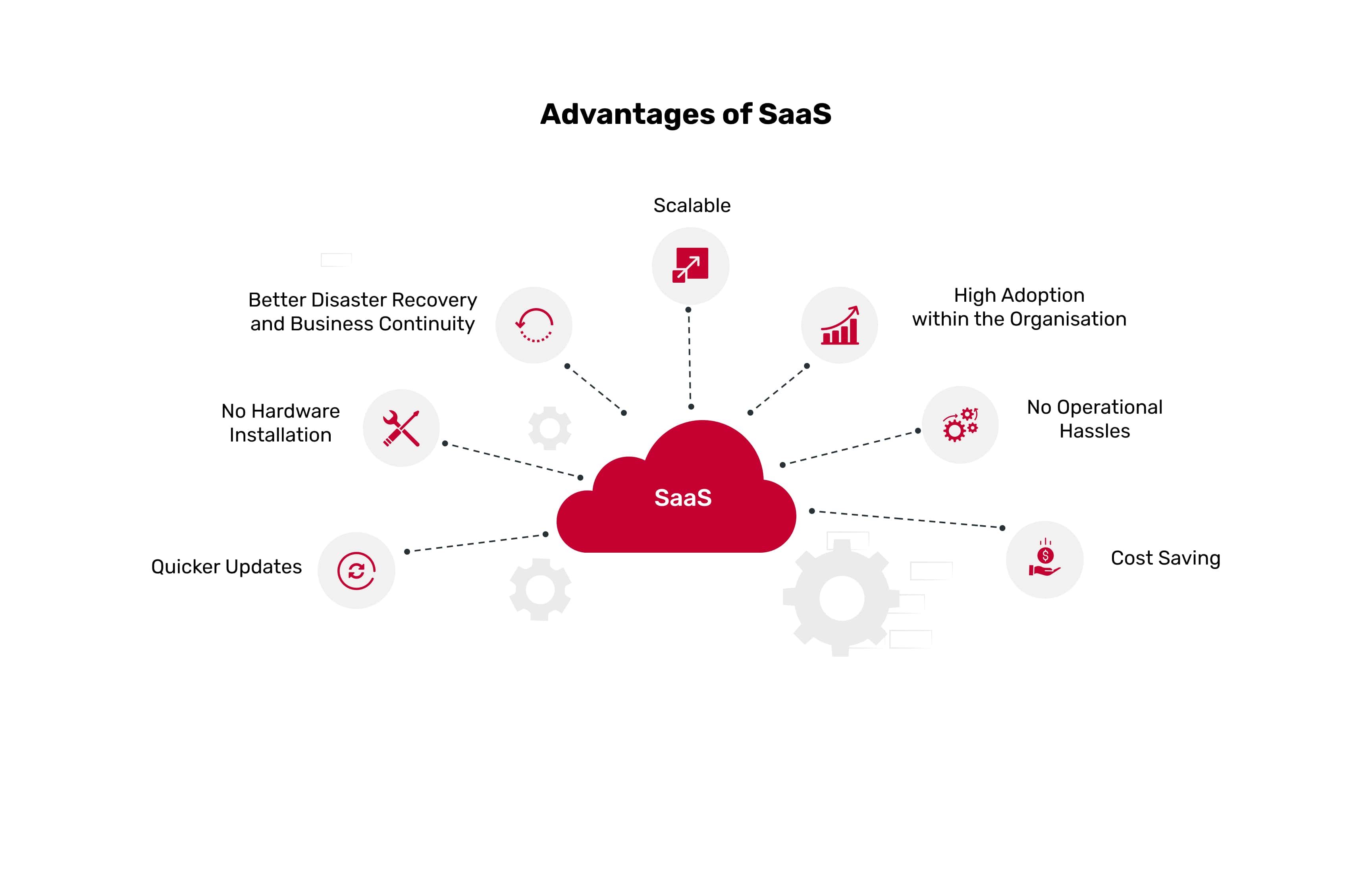
Major Benefits:
SaaS removes the need for organizations to install and run applications on their computers or in their data centers.
It also eliminates the cost of hardware acquisition, provisioning, and maintenance, as well as software licensing, installation, and support.
Other Benefits:
- Cost Saving- Instead of purchasing software to install or adding hardware to support it, customers can subscribe to SaaS offerings.
- Flexible Payment- Transition costs to recurring operating expenses allow many businesses to practice better and offer more predictable budgets. Users can terminate SaaS subscriptions at any time to prevent those recurring costs.
- Scalable Usage- SaaS offers high vertical scalability and gives customers the option to access more or fewer services or on-demand features.
- Accessibility and Persistence- Since SaaS vendors distribute their applications over the Internet, users can access them from any Internet-enabled mobile device and location.
- Customizable- SaaS applications are often customizable and can be integrated with other business applications, especially applications from a common software provider.
- Automatic Updates- Instead of purchasing new software, customers can rely on a SaaS provider to manage updates and patches automatically. It reduces the burden of in-house IT staff.
SaaS security and privacy
The cyber security risks associated with software as a service differ from those associated with traditional software. With traditional software, the software vendor is responsible for eliminating code-based vulnerabilities, while the user is responsible for running the software over a secure infrastructure and network.
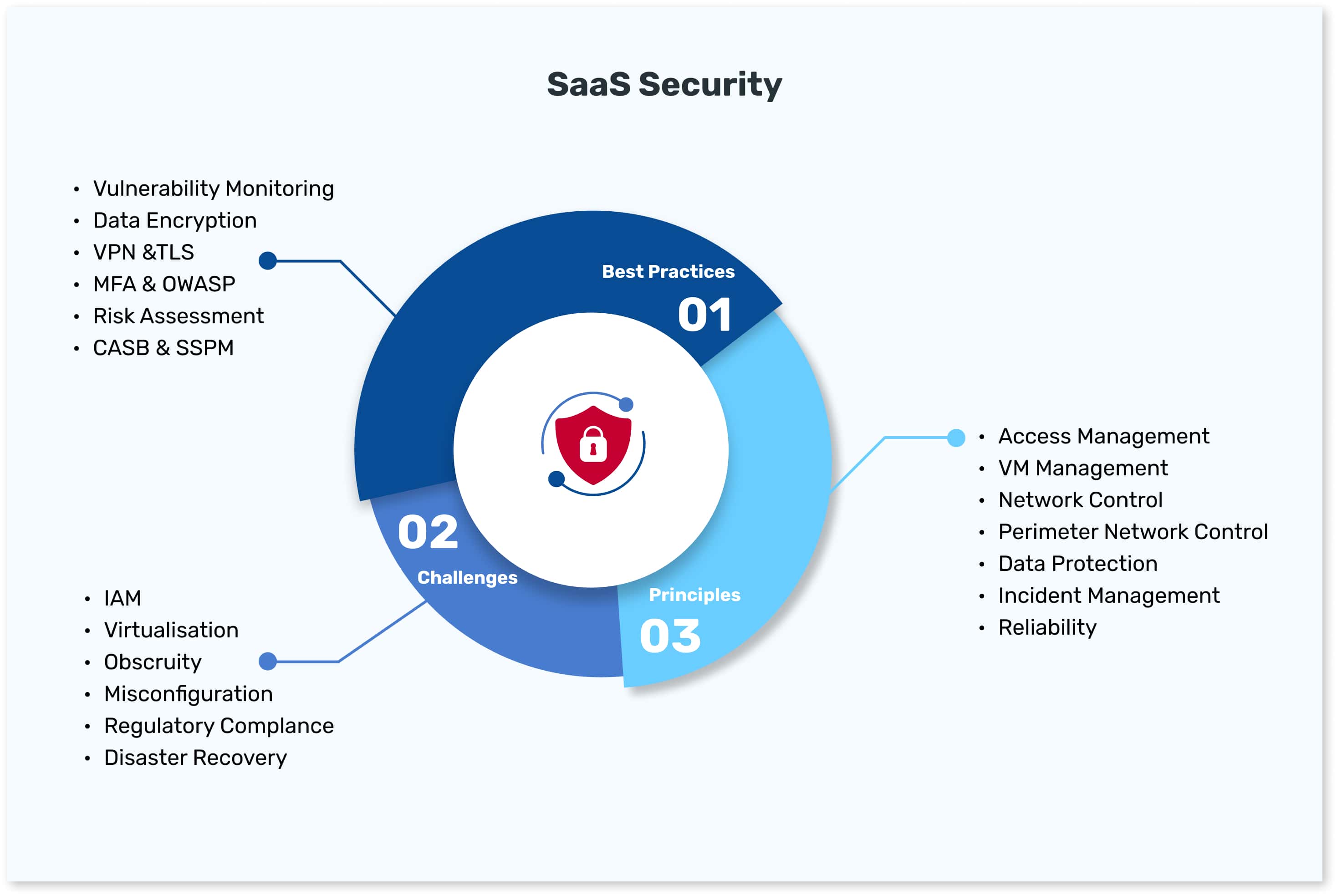
Since all users benefit from a security level that is established at the same level for all users, as a result, privacy and security are a big concern for independent software vendors and third-party cloud providers. Despite the rapid adoption of cloud-based models for fully serviced software products, organizations have some reservations about SaaS products when it comes to security and privacy.
Some of the significant issues are
- Encryption and key management
- Identity and Access Management (IAM)
- Security surveillance
- Incident response
- Poor integration into broad, company-specific security environments
- Meet data residency requirements
- Data privacy
- Additional cost for investing in third-party tools to lessen the SaaS security risk
Azure SaaS vs PaaS vs IaaS: What’s The Difference
Online businesses rely on the cloud to facilitate their clients and it requires collecting, storing, and processing a vast amount of data before presenting it to the end user. In this situation, cloud-based web applications or SaaS/PaaS/IaaS play a vital role. Let's understand the difference between IaaS vs. PaaS vs. SaaS in detail so that you can have a better understanding of cloud-based services and how these services can help you grow your business.

SaaS vs IaaS vs PaaS
All three models involve cloud providers that distribute their self-hosted data center resources to customers over the Internet. SaaS applications are fully managed applications. While IaaS is largely outsourcing data center resources, PaaS provides a development platform and other tools hosted by the provider's data center.
- SaaS (Software as a Service) application users do not need to download software, manage existing IT infrastructure, or deal with any aspect of software management. Vendors will handle maintenance, support, upgrades, security, and all other aspects of managing the software.
- IaaS (Infrastructure as a service) is used by organizations that want to outsource their data center and computer resources to a cloud provider. IaaS providers host infrastructure components like - servers, networking & storage hardware, and virtual resources. Customer organizations using IaaS services must still manage their applications, data usage, and operating systems (OS).
- PaaS (Platform as a service) provides a framework of resources for a company’s in-house developers. This hosted platform enables developers to build customized applications. For this, the vendor manages the data center resources that support the equipment. Customer organizations using PaaS services are not required to manage their OS but must manage application and data usage.
SaaS/PaaS/IaaS each cloud model offers specific functionalities and features, and it totally depends on your business requirements to take the best advantage of cloud services. Whether you need cloud-based software for data storage options or an accessible platform that allows you to build customized applications, or you want complete control over your entire infrastructure without having to physically maintain it. Once you decide to move to the cloud, the next step is determining which service model fits your needs.
Top Service Providers of SaaS, PaaS, & IaaS
SaaS - Google Workspace, Dropbox, GoToMeeting, Cisco WebEx, Salesforce, Concur
PaaS - Google App Engine, AWS Elastic Beanstalk, Windows Azure, OpenShift, Heroku, Apache Stratos
IaaS - Google Compute Engine (GCE), Microsoft Azure, DigitalOcean, Linode, Rackspace, Amazon Web Services (AWS), Cisco Metapod.
Best Practices to Protect Applications
Software security isn't just plug-and-play. Before you see the return on your security investment, you'll need to invest in a wide variety of tools, along with focused developer training, tool customization, and integration.
You should take the time to make sure you have a good software security strategy that includes software security best practices as mentioned below.
1. Patch Your Software and Systems
Attackers take advantage of known vulnerabilities associated
with outdated software. To prevent common attacks, make sure all your systems have up-to-date patches.
Regular patching is the most effective method for software security practices. Since you cannot keep your
software 100% up-to-date; But, on average 70% of applications and often more than 90% of software
components are open source.
2. Educate and Train Users
Employee training should be part of your organization's security
process. Having a well-maintained security and training course for your organization will go a long way in
protecting your data and assets. Conducting simulations such as phishing tests to help employees identify
and prevent social engineering attacks.
3. Enforce Least Privileges
Make sure that the users and your system have the minimum access
privileges required to perform their functional functions. Applying the principle of least privilege
greatly mitigates your attack by eliminating unnecessary access rights, which can lead to a variety of
compromises.
4. Automate Routine Tasks
Attackers use automation to detect open ports and other security
misconfigurations. Therefore you cannot protect your system by using manual techniques only. Automated
day-to-day security tasks (analysis of firewall changes and device security configurations), allowing your
security staff to focus on more strategic security initiatives.
5. Build a Strong IR Plan
No matter how much you follow software security best practices, there
is always a potential for a breach, but you can prevent attackers from achieving their mission. Create a
solid incident response (IR) plan to detect an attack and then limit the damage it does.
6. Document your security policies
Security policies allow your employees, including network
administrators and security personnel, to understand what activities you are doing and why. Maintain a
repository that includes widely documented software security policies and make sure everyone reads them.
At the very least, make that part of the onboarding process for new employees.
7. Integrate Security into Your SDLC
Integrate the entire software security activities into
your organization's SDLC (or software development life cycle). Building security into your SDLC takes time
and effort initially, but fixing vulnerabilities in SDLC early is much cheaper and a lot faster than
waiting until the end.
8. Monitor User Activity
Reliable, but verified. Monitoring your users’ activities helps you
ensure that users are following best practices for software security. It also allows you to detect
suspicious activities such as abuse of privilege and user impersonation.
SaaS vendors and examples
The SaaS market includes a variety of software vendors and products. Industry players include small, single-product vendors all the way up to cloud giants such as AWS and Google.
SaaS products are also diverse, ranging from video streaming services to IT business analytics tools. There are SaaS applications for fundamental business applications such as email, sales management, customer relationship management (CRM), financial management, human resource management (HRM), billing, and collaboration. Enterprise SaaS products for specific industries, such as insurance or medical, are known as vertical SaaS products.
SaaS products may be primarily marketed to B2B, B2C markets, or both. Examples of popular SaaS products include:
- Salesforce
- Google Workspace apps
- Microsoft 365
- HubSpot
- Trello
- Netflix
- Zoom
- Zendesk
- DocuSign
- Slack
- Adobe Creative Cloud
- Shopify
- Mailchimp
SaaS pricing
Generally, using a SaaS product is more cost-effective than a traditional software license for enterprise software, as setup and installation onto hardware are not necessary. SaaS providers typically use one of many subscription-based pricing models for customers.
- Free, or ad-based. Service may be free for users, with the SaaS provider generating revenue through selling advertisement space. In this model, there is typically an option to upgrade to a paid tier that doesn't include intrusive ads.
- Flat rate. Customers are granted access to the software's full suite of features for a fixed monthly or annual subscription fee.
- Per user. Pricing is determined by how many people will be using the service for each subscription. There is a fixed price for every user.
- Per user tiers. Pricing tiers are based on a range of how many active users can exist on a single subscription.
- Storage tiers. Customers may have free access to a service but will be required to pay for storage if they wish to continue using the product after they pass the free limit.
- Pay-as-you-go, or usage-based. The more customers use the service, the more they are billed, and vice versa.
- Per active user. This incorporates aspects of the "per-user" and "pay-as-you-go" strategies. Subscribers are billed per user, but only if the user has been actively using the service beyond a defined threshold.
- Feature-based tiers. Price tiers are determined by the number of features the subscriber seeks. In this model, reduced versions of the software with limited features are available for a lower price than the maximum functionality tier. Additional feature tiers in between the minimum and maximum functionality tiers may also exist.
- Freemium. The service will be generally free to use with an entry-level tier. However, there will typically be functional restrictions in place that are designed to upsell customers to a paid tier.
SaaS challenges and risks Please check these points
SaaS also has some potential risks and challenges; as businesses must rely on outside vendors to provide the software, one should keep that software working seamlessly, track and report accurate billing, and provide a secure environment for business data.
Issues Beyond Customer Control- Issues can arise when providers experience service disruptions, make unwanted changes to service offerings, or experience security breaches. All of which can have a profound impact on customers' ability to use SaaS offerings. To proactively mitigate these issues, customers should understand their SaaS provider's SLA and ensure that it is implemented.
Security- Cloud security is often counted as a significant challenge for SaaS applications Because of the shared nature of these services.
Clients Lose Control Over Versioning- If the provider adopts a new version of an application, it will roll out to all its customers, regardless of whether the customer wants the new version or not. This may require the organization to provide additional time and resources for training.
Difficulty Changing Vendors- Like using any cloud service provider, switching vendors can be difficult; customers would have to migrate a very large amount of data. In addition, some vendors use proprietary technologies and data types, which can further complicate customer data transfer between different cloud providers.
Our Award-winning portfolio for SaaS
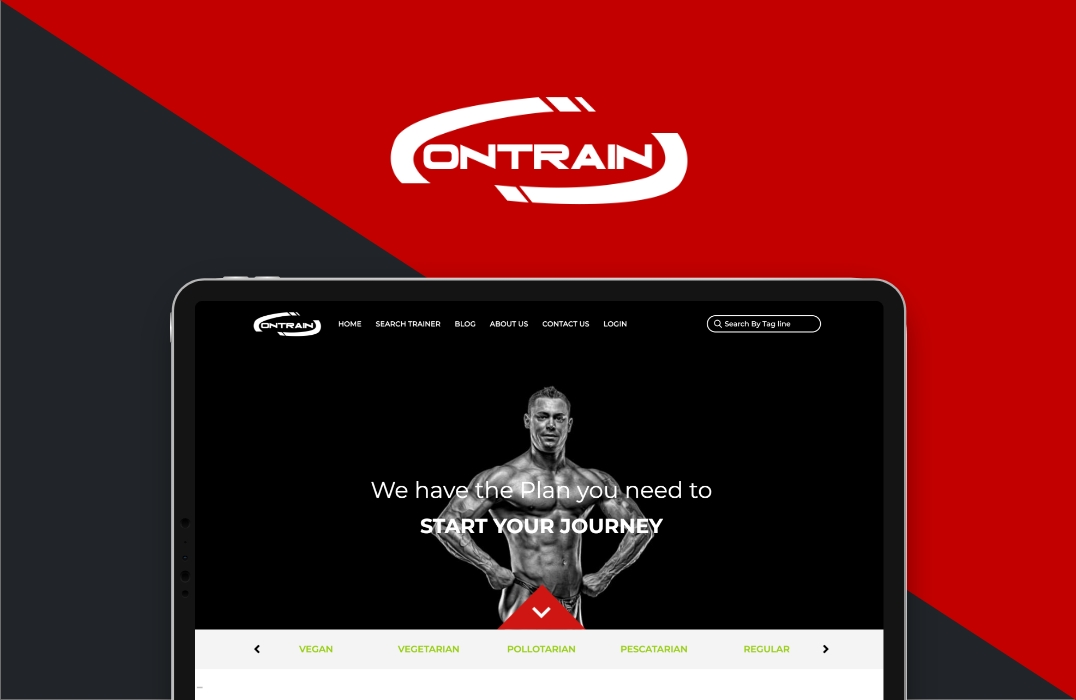
Ontrain
A place where Gym trainers meet with their trainees and manage everyone. We designed and developed this Gym Trainer Saas Application in-house for personal trainers. They can easily build fitness and meal plans online, Including a complete training log with a 25000 foods database. Much more!

Telemedicine
Telemedicine is a complete SAAS application. This Cloud-based Hospital Management System helps the busiest hospitals run more efficiently by automating and digitizing every task. Connect with patients anywhere and anytime. It’s simple, secure, and works seamlessly with your doctor’s practice. We’ve designed this app easy-to-use by seamlessly integrating its key features like scheduling, patient records, billing, and follow-ups.
We can help you with Digital Transformation or SaaS product Development
Customer Success
Intelligence-driven, scalable insights for user onboarding, retention,
adoption, and revenue growth.
Product Success
Understand your customers' interactions with your product and make informed
decisions about product success.
Customer Experience
Bring efficiency, add scale and connect user behavior with personalized
actions.
Customer Onboarding
Define and track onboarding by platform, user progress, account, and
portfolio.
Upsell and Cross-sell
Identify, monitor, and execute account expansions on time with real-time
reports and indicators.
Decrease in Customer Churn
Actively identify risky customers and prevent customer churn using
automation, early warning insights, and more!
User Adoption
Optimize product use by intensively monitoring user data and obtaining actionable
information
Get in Touch
At HealXRlabs, we are a team of professionals with a commitment to providing suitable solutions to make your business grow. We create the best UI/UX design for your SaaS products. We can help companies with end-to-end proposal support to save their time and help them thrive more. We are a proud consulting firm to make your digital business win more through the latest technologies and innovation across proposals, products, and productivity.
